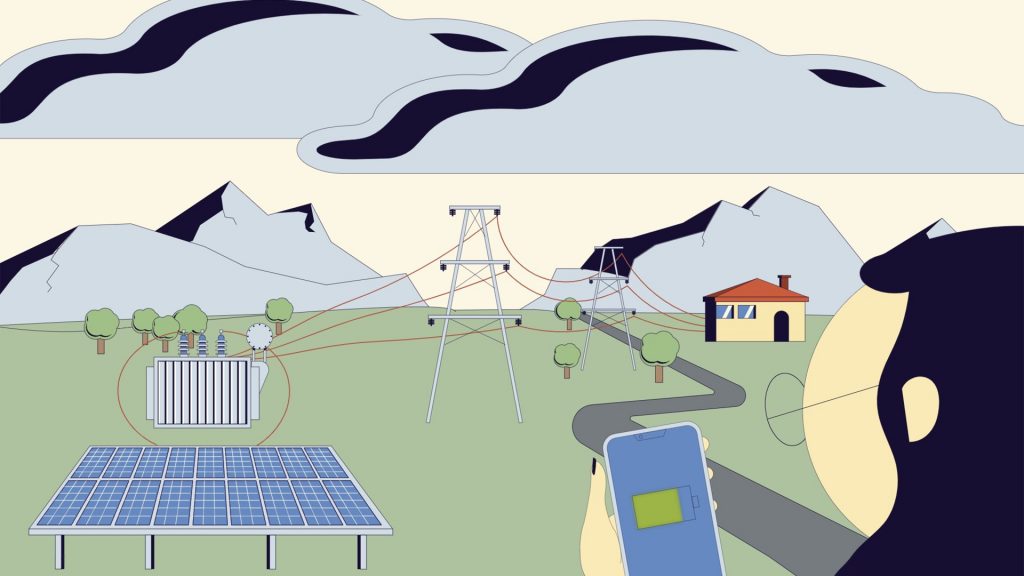Topic
How can sunlight charge my phone?
The Sun’s energy warms our planet, drives its winds and ocean currents, and provides the energy for life to flourish. Today it’s used to produce the electricity our society relies on.
Video
A short 3 minute video explaining the topic for students.
How can sunlight charge my phone?
An introduction to solar energy and how sunlight is turned into electricity.
Use this video in your lesson or share directly with your students.
Digital Activities
Digital interactive activities can be used in your classroom in conjunction with the video, or independently.
Q&A
This interactive Q&A is designed to quiz students on what they have learned after watching the video.
This is a digital version of the multiple choice PDF worksheet below.
Hey Sun! Charge my phone!
Drag and drop game where students build a circuit using solar panels to connect power to charge their phone.
Demonstrates solar power, circuits, and batteries in a real world context.
Worksheets and Classroom Activities
Topic PDF worksheets can be used in your classroom either in conjunction with the video or independently.
Q&A
This Q&A worksheet is designed to quiz students on what they have learned after watching the video.
This is a PDF version of the digital interactive found above.
Crossword
Pulling ideas from across all topics, this crossword worksheet is a simple resource for use in your classroom.
Teacher Resources
Teacher notes and Q&A answers
By using the resources available for this topic, your students have the opportunity to learn:
- Solar energy can power home, technology, industry and transport.
- An introduction to where solar energy comes from
- Different methods of turning light from the sun into solar energy
- An introduction to photovoltaic solar cells
This PDF includes:
- Video summary
- Literacy links
- Research tasks
- Curriculum links
- Worksheet answers
Crossword answers
Download the crossword worksheet solutions.
Curriculum Mapping
Lower Secondary topics are designed for Australian grade 7 and 8 students and are aligned to Australian curriculums.
Australian Curriculum Science, year 8
Overview. View link
Energy appears in different forms, including movement (kinetic energy), heat and potential energy, and energy transformations and transfers cause change within systems (ACSSU155). View link
Solutions to contemporary issues that are found using science and technology, may impact on other areas of society and may involve ethical considerations (ACSHE135). View link
Cross curricular priorities: Sustainability.
General capabilities: Numeracy, Literacy, Ethical understanding.
NSW Curriculum Science, stages 3 and 4
Overview. View link
Discusses how scientific understanding and technological developments have contributed to finding solutions to problems involving energy transfers and transformations (SC4-11PW).
Appreciates the importance of science in their lives and the role of scientific inquiry in increasing understanding of the world around them (SC4-1VA).
Cross curricular priorities: Sustainability.
General capabilities: Numeracy, Literacy.
Victorian Curriculum Science, levels 7 and 8
Overview. View link
Energy appears in different forms including movement (kinetic energy), heat, light, chemical energy and potential energy; devices can change energy from one form to another (VCSSU104) . View link
Science and technology contribute to finding solutions to a range of contemporary issues; these solutions may impact on other areas of society and involve ethical considerations (VCSSU090). View link
Cross curricular priorities: Sustainability.
General capabilities: Numeracy, Literacy.

